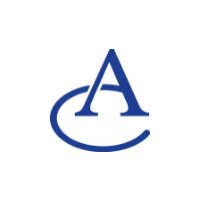What makes a high performing leadership team? Pt2

Part 2: Shifting gear to high performance
“Where’s Dan? We need his input on this!”
“He’s with his team solving the problem with the system that came up yesterday. We’ll have to manage without him, again.”
In Part One of What makes a high performing leadership team? I explored some basics of building the team - no easy feat in itself. In this second part, I explore what it takes to move from building a team at the top - something much harder.
A significant part of the challenge is that members of a leadership team are both part of that team AND have to lead that part of the business for which they have responsibility.
In Part One I explained that our construction, our cognitive biases (unconscious intentions), are at the root of team performance.
The trouble is, except at the very highest levels of development, we construct ourselves in response to our internal representation of our environment.
At the simplest level, for members of a leadership team, the leadership team itself is one environment, and the business team they lead is another.
At a more complex level, within the business area they lead, there may, for example, also be a BAU environment, a change environment, and a ‘crisis’ environment.
The high-performing leadership team member must be able to construct an encompassing representation of the meta-environment consisting of each of these (and possibly more) so they can more accurately perceive which needs serve the greatest good.
At the level of Cognitive Intentions, this requires significant cognitive dexterity in information processing, particularly in relation to:
- information size - the ability to choose in the moment whether generalities or specifics are of greatest importance
- thinking style - the ability to switch effortlessly between abstractions like principles or values and concrete facts according to the needs of the moment
- time frame - the ability to identify whether short-term or long-term needs are more important in deciding where to focus one’s attention
The team itself must be led to create a culture that enables and supports this meta-environmental construction and operation. It’s not enough to merely state that this is the case, the culture must be intentionally cultivated as part of the team’s development.
Collective outcomes for the team which encompass all areas of the business will support this.
Scale-up leadership teams could be given responsibility for extrapolation. This process of identifying and remediating any internal business model constraints to growth confers collective accountability for hitting the organisation’s growth goals.
With this accountability, the leadership team will necessarily have to work as a team to define growth goals on which they agree and the critical assumptions upon which those goals are based, identify and prioritise the constraints, and agree the mitigations. Each team member will then need to lead their part of the business through the changes required to support the mitigations.
Success will depend on exceptional cognitive dexterity at team AND individual level.
The development approach, therefore, needs to operate at two levels:
- development of the individuals in the team, and
- development of the team itself
with each reinforcing the other.
Development on both levels requires an understanding of the individual and collective biases.
As stated in Part One, at the IAD we use the Identify Compass™ to deconstruct thinking styles across 50 dimensions (Cognitive Intentions) which enables us to discern cognitive biases at an individual level, and aggregate them up to the level of the team.
Individual development should focus on the largest areas of bias, with a prioritisation given to those Cognitive Intentions referenced above in support of constructing a good quality mental model of the meta-environment.
Team development might consist of a leadership development programme designed to vertically develop the team as a whole, and which incorporates a specific business challenge, e.g., a cycle of the extrapolation process up to defining and planning a mitigation. It might also include continuing developmental facilitation of the processes being run by the team.
Developmental facilitation, as alluded to in Part One, consists of facilitation from two viewpoints:
- the content of the session, focussed on the specific team process/process step
- the thinking processes used in the discussion with a view to raising awareness of cognitive biases at play
To summarise then:
- Before a group of leaders can become a high-performing leadership team, they first have to become a team. This is discussed in Part One.
- Leadership team members must be capable of constructing a meta-environmental perspective, and a team culture supportive of this perspective.
- Collective accountabilities encompassing all areas of the business can support this
- To move to high-performance requires exceptional cognitive dexterity at the level of the individual and the team
- Developing a high-performance leadership team by targeting cognitive biases involves:
- Deconstructing the thinking styles of the individuals to discern their cognitive biases
- Using this understanding to support individual development with a priority on constructing a good quality mental model of the meta-environment
- Whole team Leadership development programmes which include consideration of real-world business problems
- Facilitating team processes activities from the two perspectives of content and thinking processes
All Rights Reserved | Adult Development (UK) Ltd




